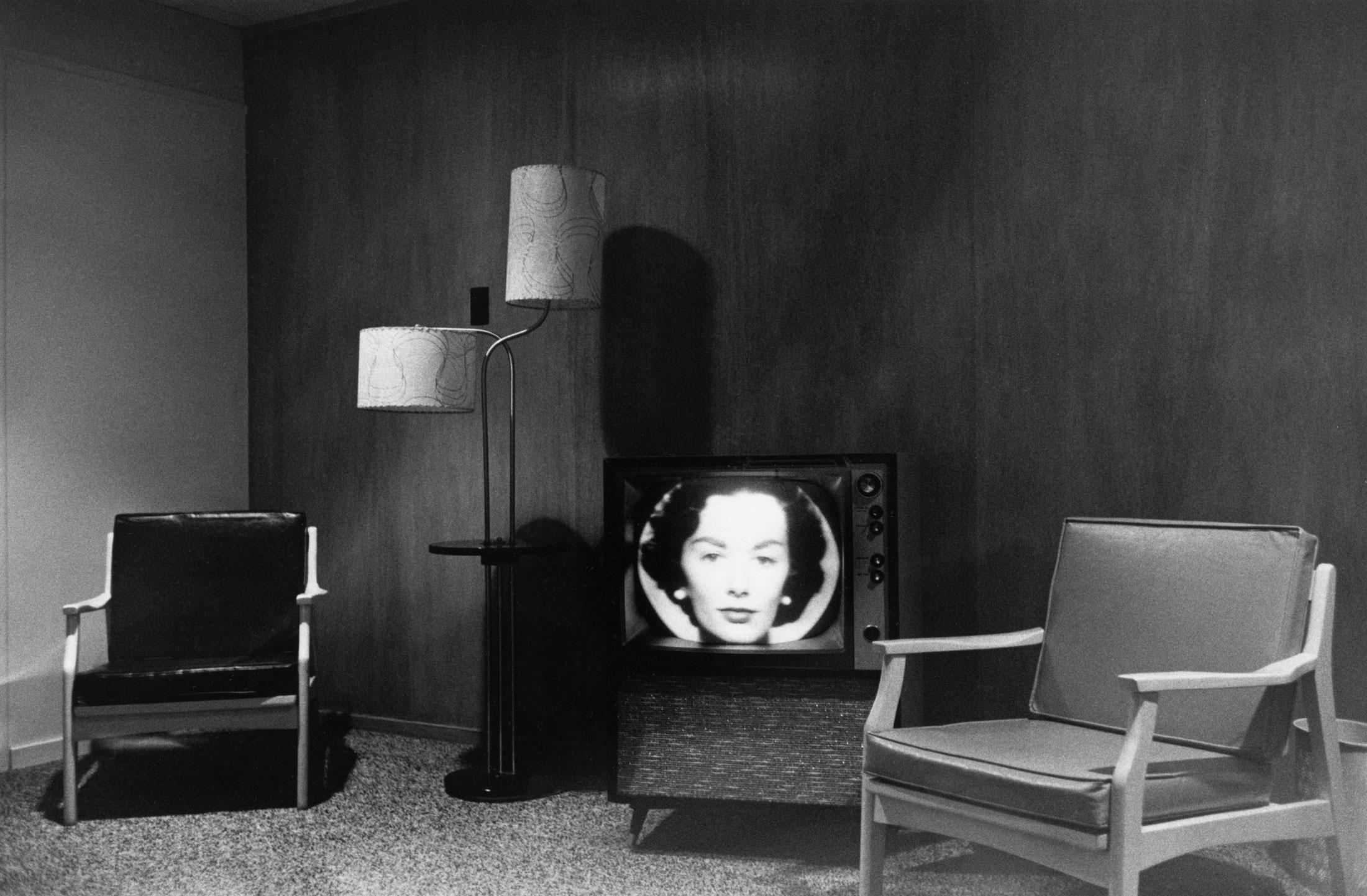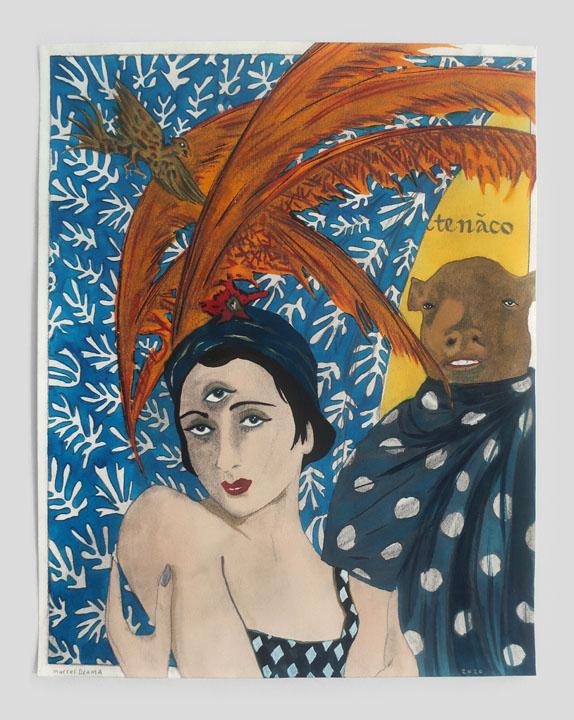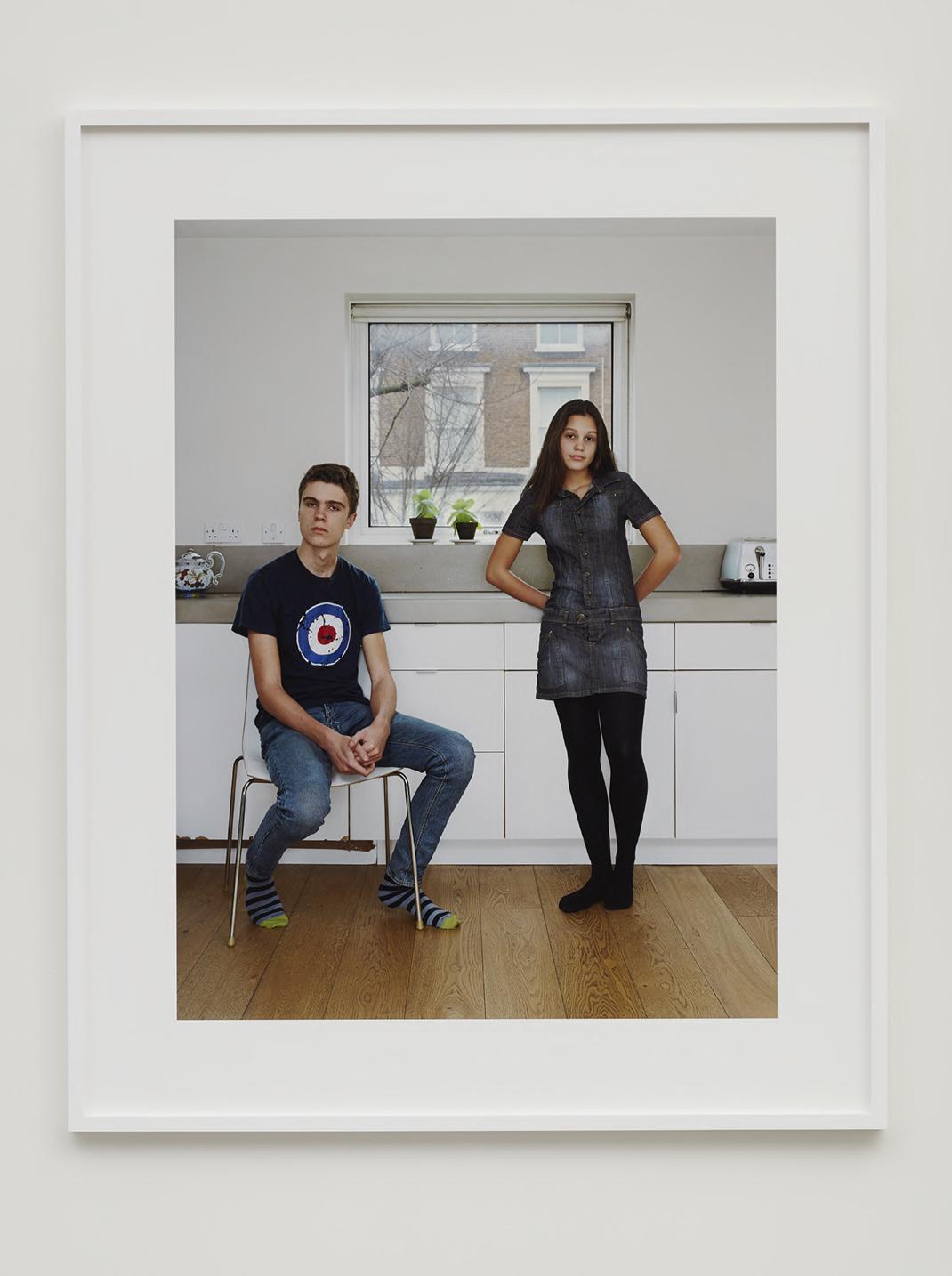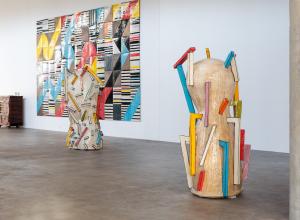Marcel Dzama: Pink Moon
David Zwirner
Launching its first virtual viewing room in 2017, David Zwirner has one of the most sophisticated online presences of any international gallery, and Marcel Dzama’s Pink Moon exhibition lets viewers see why it’s at the forefront of this innovative movement. Offering a selection of the artist’s never-before-seen drawings inspired by his travels in Mexico and Morocco, the enchanting exhibition features source photos and videos for the two suites of works, slideshows of drawings in progress in the studio, a time-lapse video of the painting of a piece, and a downloadable coloring book of six new versions of the drawings, which was made during quarantine.
The 2020 Mexican series mashes up memories of a family sojourn south of the border with surreal costumed characters and exotic wild animals. The beguiling I am her minotaur and she is my matador portrays a theatrical femme fatale with a third-eye standing under a palm tree as a mythical minotaur waits in the wings, while Grandmother Nature's portrait depicts a stylish woman in front of a chorus line of dancing dames with beastly heads, with all of them amusingly wearing polka dot dresses. The delightful Moroccan drawings, which were produced in 2018 and will be published in a forthcoming monograph from the Louis Vuitton Travel Book series, also mix reality with fantasy in watercolors of tourists cavorting with monkeys and mannequins sporting patterned kaftans in a store window.






























![DEl Kathryn Barton [Australian b. 1972] the more than human love , 2025 Acrylic on French linen 78 3/4 x 137 3/4 inches 200 x 350 cm Framed dimensions: 79 7/8 x 139 inches 203 x 353 cm](/sites/default/files/styles/image_5_column/public/ab15211bartonthe-more-human-lovelg.jpg?itok=wW_Qrve3)



